-
 +2 +1
+2 +1Scientists Discovered Something Kinda Alarming: The Universe Shouldn't Actually Exist
These models are very, very wrong.
-
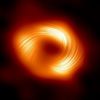 +31 +3
+31 +3Magnetic Fingerprints of The Milky Way's Black Hole Revealed in Stunning Image
The magnetic fields that spiral around our galaxy's supermassive black hole Sagittarius A* have now been revealed by twisted light.
-
 +39 +8
+39 +8Queen's Brian May helped NASA return its first asteroid sample
Brian May has once again proven why he is rock royalty. Not only is he the Queen guitarist, but he is also an astrophysicist who recently helped NASA return its first ever asteroid sample to Earth.
-
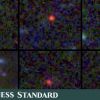 +26 +4
+26 +4Galaxies spotted by Webb telescope rewrite understanding of early universe
Observations by NASA's James Webb Space Telescope are upending the understanding of the early universe, indicating the presence of large and mature but remarkably compact galaxies teeming with stars far sooner than scientists had considered possible.
-
 +4 +1
+4 +1Supermassive black hole at heart of ancient galaxy ‘far larger than expected’
A supermassive black hole discovered at the heart of an ancient galaxy is five times larger than expected for the number of stars it contains, astronomers say. Researchers spotted the immense black hole in a galaxy known as GS-9209 that lies 25bn light-years from Earth, making it one of the most distant to have been observed and recorded.
-
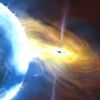 +28 +5
+28 +5Astronomers spot the biggest cosmic explosion ever seen, and it's 100 times the size of our solar system
The blast, which is 2 trillion times brighter than the sun, may have been caused by a supermassive black hole sending shock waves through a cloud of cosmic gas.
-
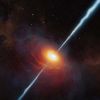 +27 +5
+27 +5Astronomers solve the 60-year mystery of quasars – the most powerful objects in the Universe
Scientists have unlocked one of the biggest mysteries of quasars – the brightest, most powerful objects in the Universe – by discovering that they are ignited by galaxies colliding.
-
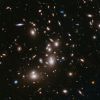 +24 +1
+24 +1Galaxy clusters yield new evidence for standard model of cosmology
Cosmologists have found new evidence for the standard model of cosmology—this time, using data on the structure of galaxy clusters. In a recent study published in Monthly Notices of the Royal Astronomical Society, a team led by physicists at the Department of Energy's SLAC National Accelerator Laboratory and Stanford University made detailed measurements of the X-ray emission from galaxy clusters, which revealed the distribution of matter within them. In turn, the data helped the scientists test the prevailing theory of the structure and evolution of the universe, known as Lambda-CDM.
-
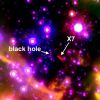 +21 +4
+21 +4A mysterious object is being dragged into the supermassive black hole at the Milky Way’s center
For two decades, scientists have observed an elongated object named X7 near the supermassive black hole at the center of the Milky Way and wondered what it was. Was it pulled off a larger structure nearby? Was its unusual form the result of stellar winds or was it shaped by jets of particles from the black hole?
-
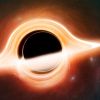 +19 +3
+19 +3Black holes may be the source of mysterious dark energy
When astronomers discovered that the universe is expanding at an accelerating rate, they theorized that some force must be pushing things farther apart and overcoming gravity, which should be slowing things down. That force was suggested to be dark energy, but no one has ever figured out from where it comes.
-
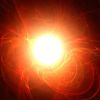 +23 +5
+23 +5Physicists Say Aliens May Be Using Black Holes as Quantum Computers
If life is common in our Universe, and we have every reason to suspect it is, why do we not see evidence of it everywhere? This is the essence of the Fermi Paradox, a question that has plagued astronomers and cosmologists almost since the birth of modern...
-
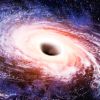 +23 +2
+23 +2Could There Be a Black Hole Lurking on the Edge of the Solar System?
Black holes have captured our imaginations for years: the idea of a near-invisible giant vacuum cleaner drifting through space, ready to devour the Earth in one gulp, is enough to keep anyone awake at night. But now, despite their mystical past, we understand more about black holes and how they work than we ever have.
-
 +3 +1
+3 +1Physicist encourages continuing the search for life in Venus' atmosphere
In a recent paper accepted to Contemporary Physics, a physicist from Imperial College London uses past missions and recent findings to encourage the importance of searching for life in the atmosphere of the solar system’s most inhospitable planet, Venus.
-
 +13 +1
+13 +1Walter Alter: Webb Telescope Big Bangs Experts
Since July 2022, the James Webb Space Telescope has delivered stunning news: it's seeing galaxies orders of magnitude brighter in the early universe then what science anticipated.
-
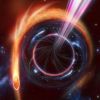 +27 +2
+27 +2We saw a black hole rip apart a star 8.5 billion light-years away
A black hole engulfing a star has been identified as 8.5 billion light-years from Earth. This is the most distant detection of this type of cataclysmic event. Stars that roam too close to black holes are very reckless. They usually end up torn apart by the extreme gravity of black holes, which readily gobble up this material. We have just detected the most distant of these events, announces the European Southern Observatory (ESO) on November 30, 2022. The detection is detailed in the journal Nature.
-
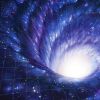 +19 +3
+19 +3What are wormholes? An astrophysicist explains these shortcuts through space-time
A wormhole is like a tunnel between two distant points in our universe that cuts the travel time from one point to the other. Imagine two towns on two opposite sides of a mountain. People from these towns would probably have to travel all the way around the mountain to visit one another. But, if they wanted to get there faster, they could dig a tunnel straight through the mountain to create a shortcut. That's the idea behind a wormhole.
-
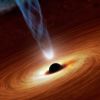 +19 +3
+19 +3Do black holes explode?
Black holes are cosmic vacuum cleaners — massive objects so large that not even light can escape them. Most people imagine black holes do nothing but sit there and devour wandering pieces of gas or dust.
-
 +14 +4
+14 +4How the Inside of a Black Hole Is Secretly on the Outside
Mysterious “islands” help to explain what happens to information that falls into a black hole
-
 +4 +1
+4 +1Cosmic 'tug-of-war' between galaxies created a tidal tail of whipped-away stars
A distant galaxy stopped birthing stars when a merger with another galaxy ripped out its star-forming gas and stars, a violent process that left it with a massive 'tail' of star-stuff. SDSS J1448+1010 was formed when the universe was roughly half its current age of 13.8 billion years old from the collision of two progenitor galaxies. This resulted in a cosmic tug of war arising from each galaxy's gravitational influence.
-
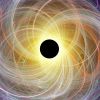 +18 +3
+18 +3Black Holes Finally Proven Mathematically Stable
In 1963, the mathematician Roy Kerr found a solution to Einstein’s equations that precisely described the space-time outside what we now call a rotating black hole. (The term wouldn’t be coined for a few more years.) In the nearly six decades since his achievement, researchers have tried to show that these so-called Kerr black holes are stable.
Submit a link
Start a discussion




















